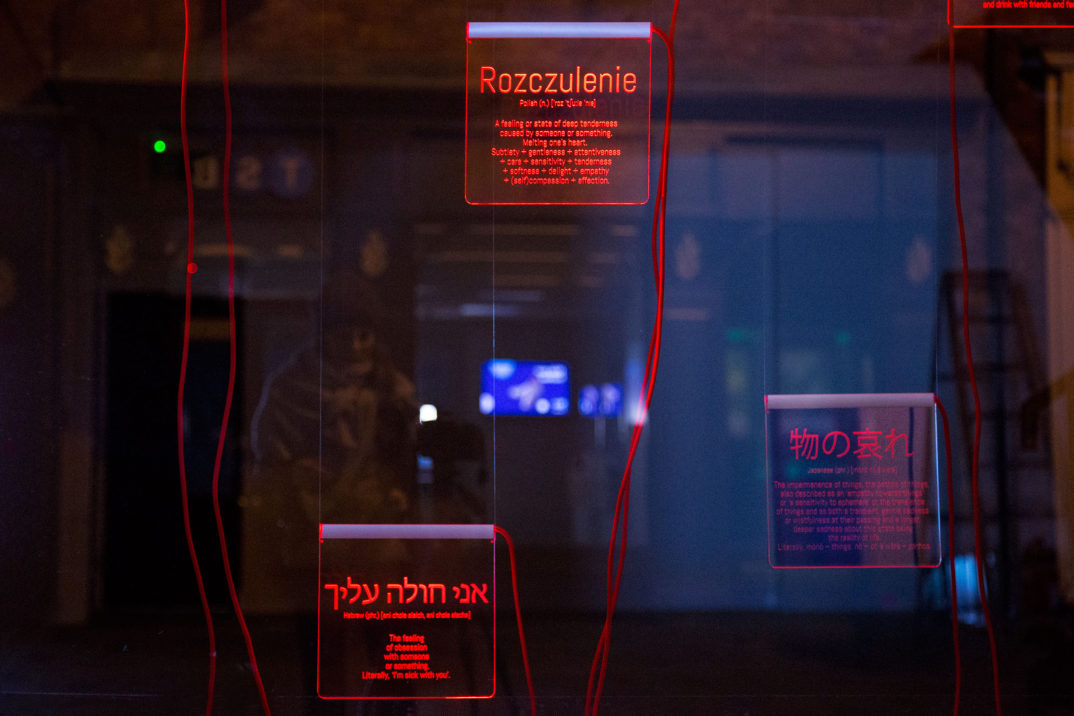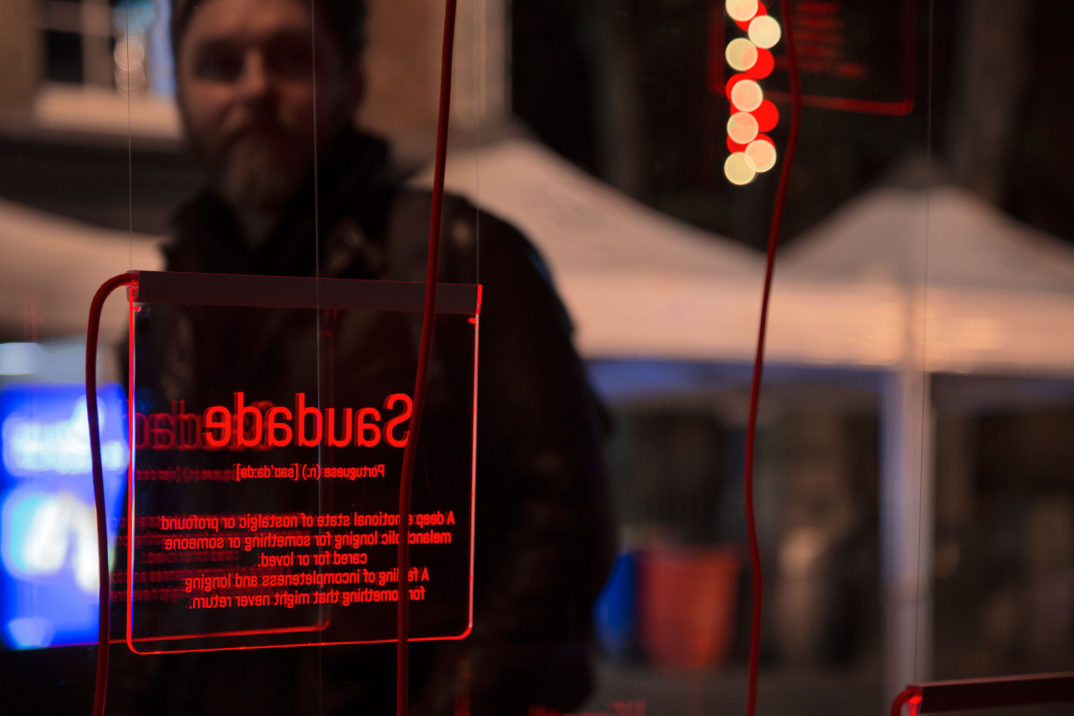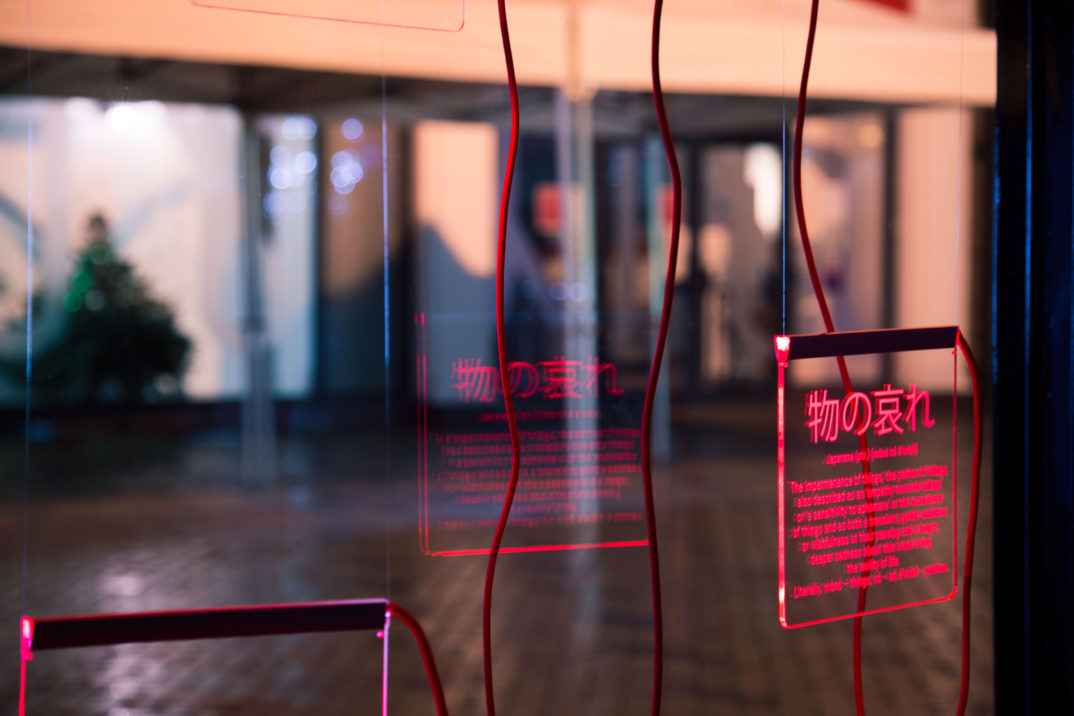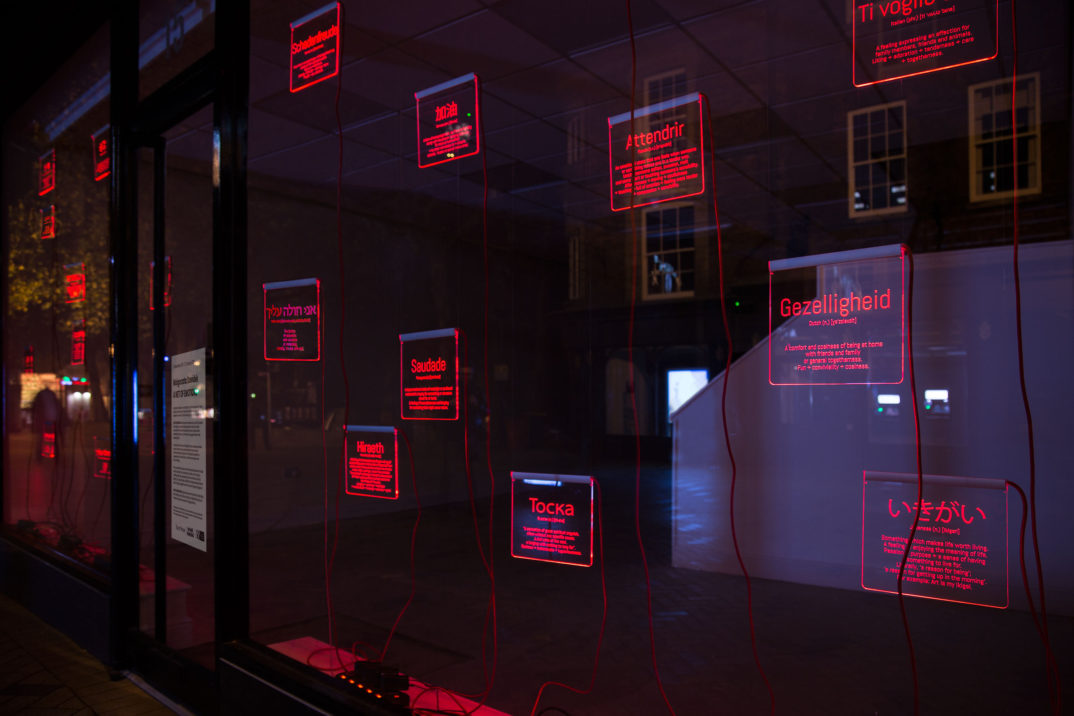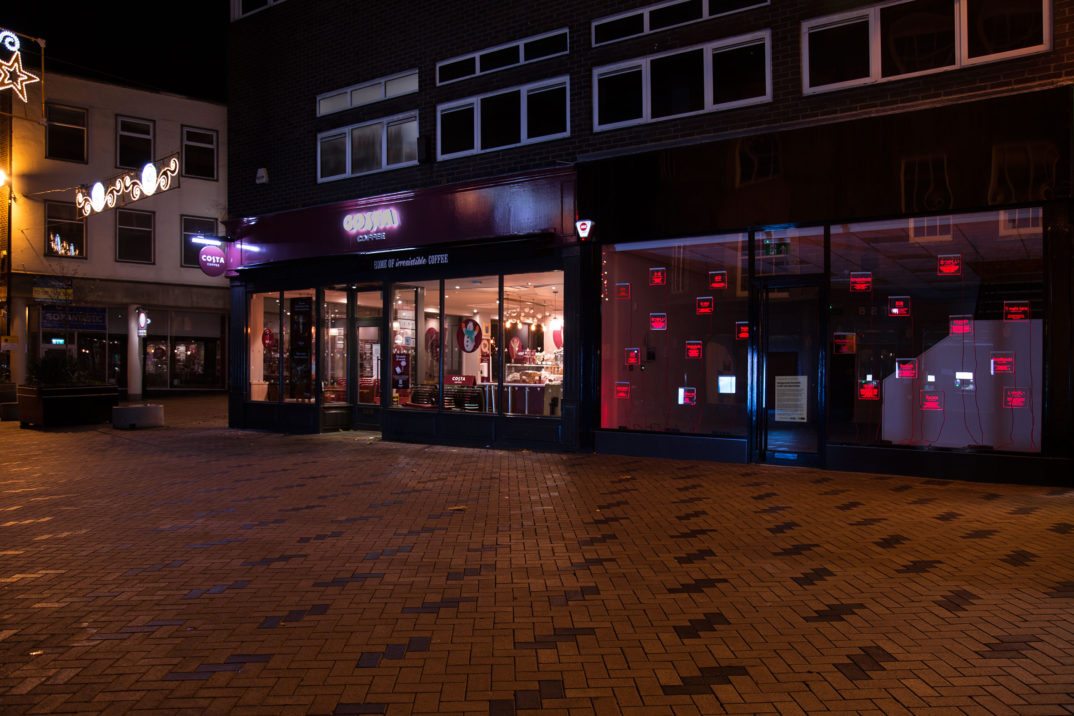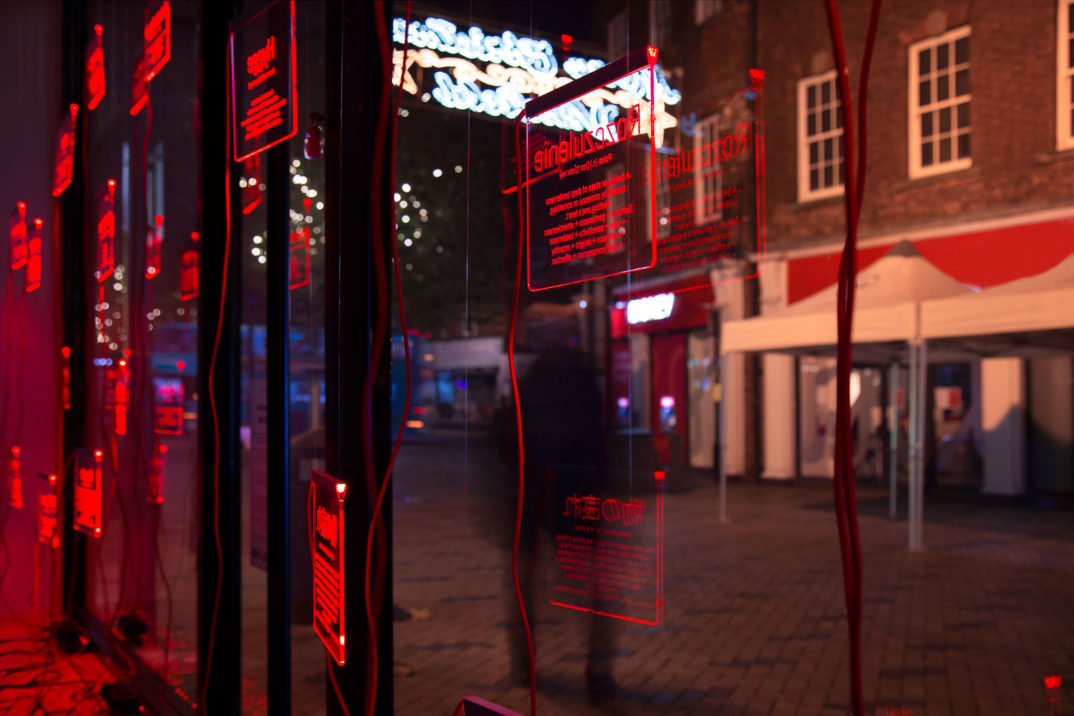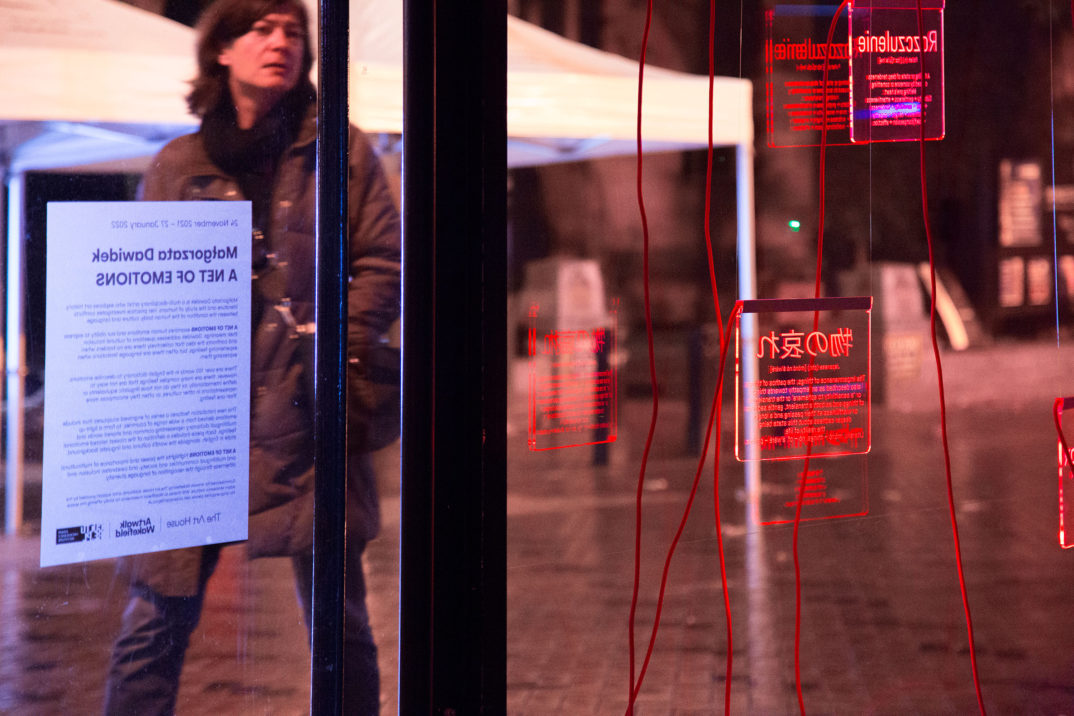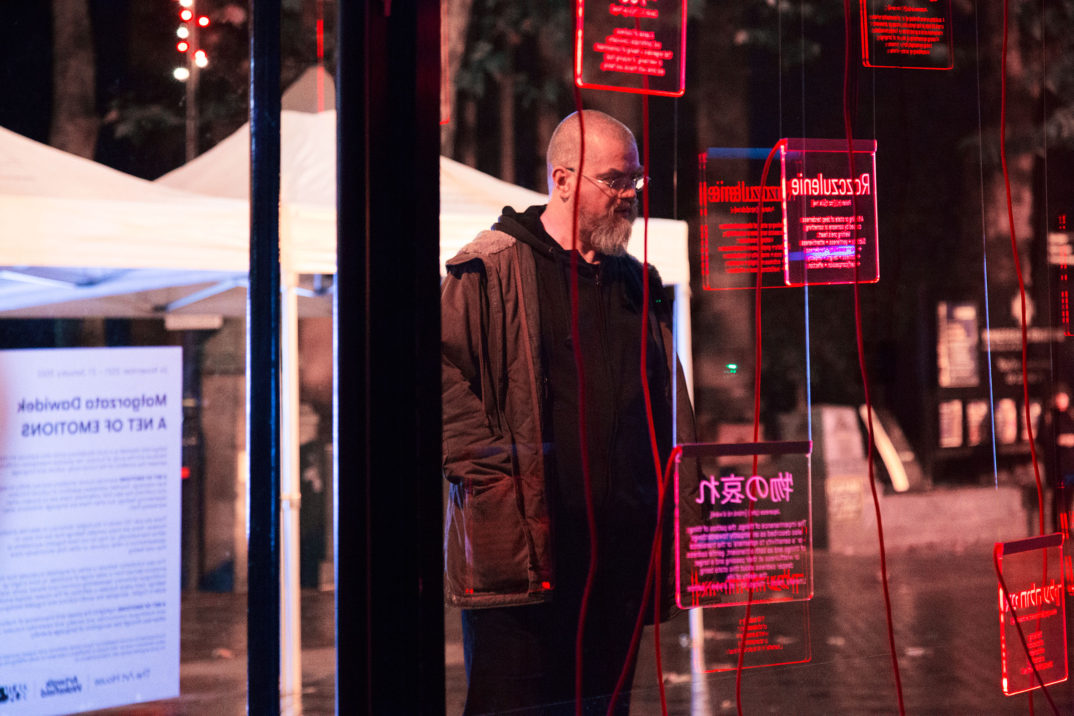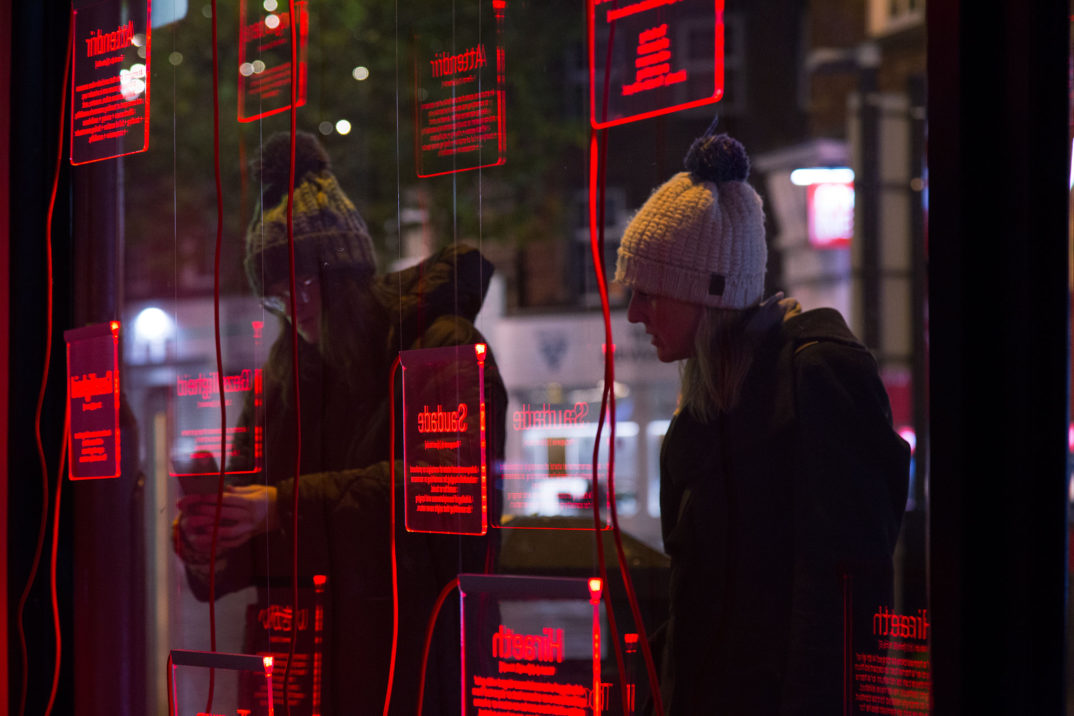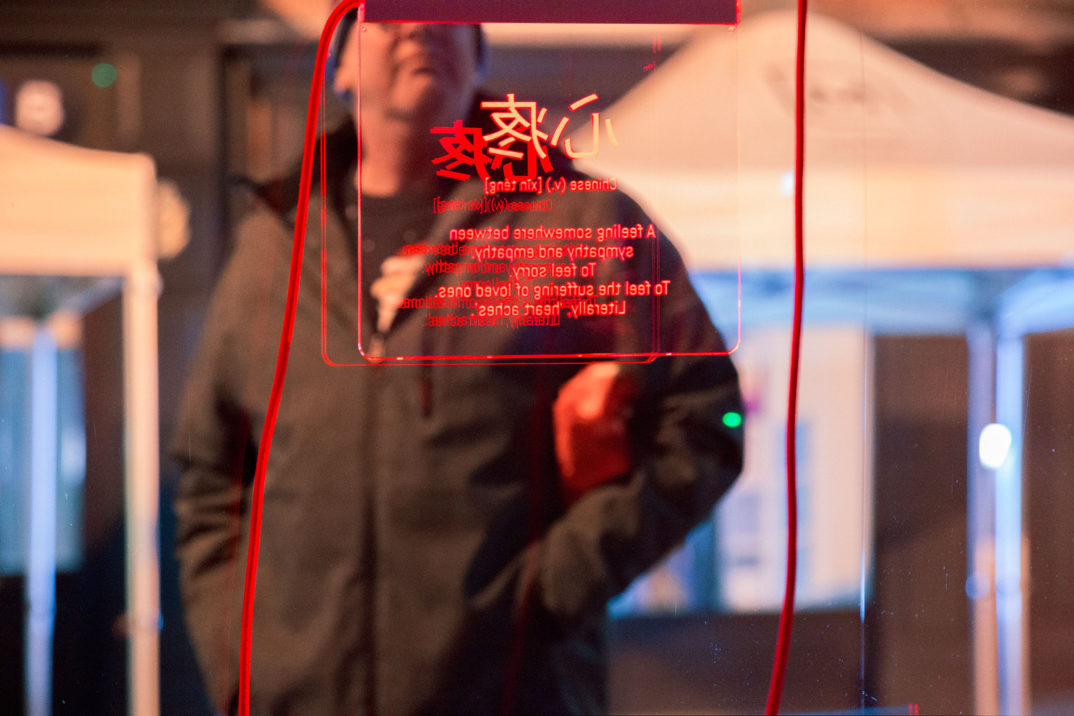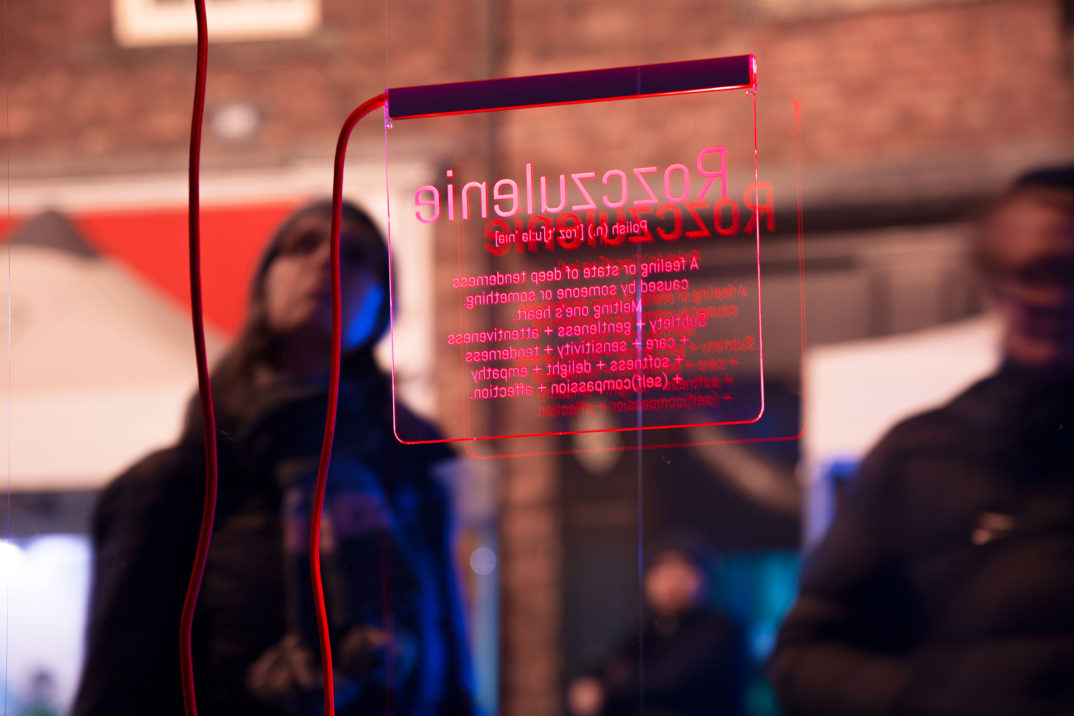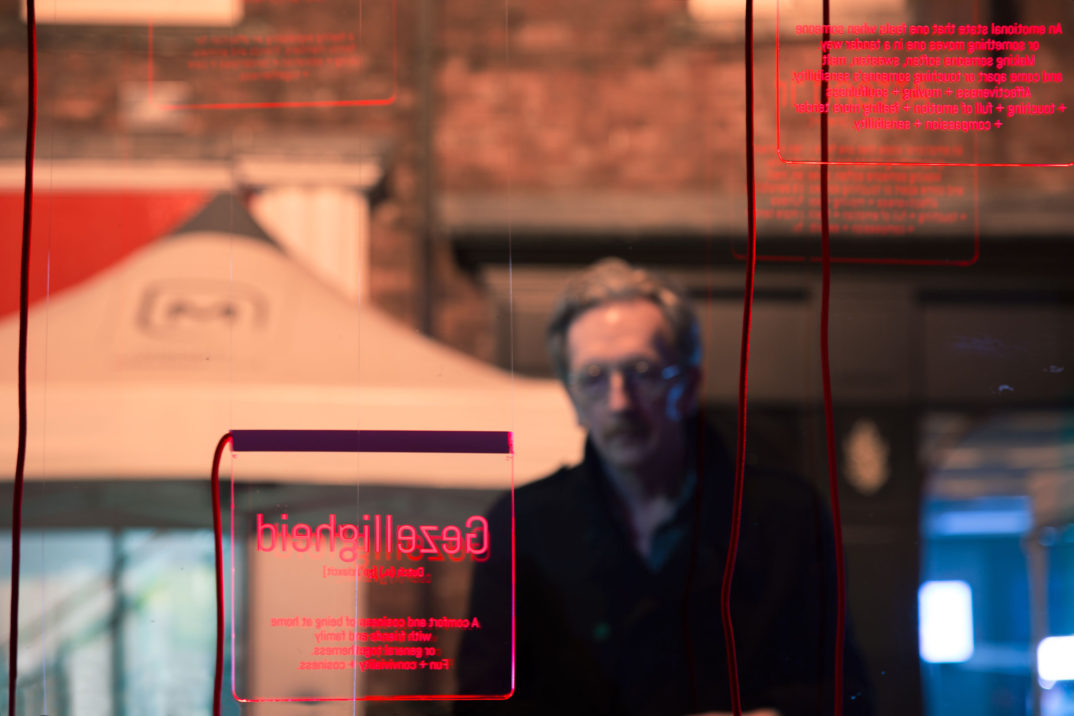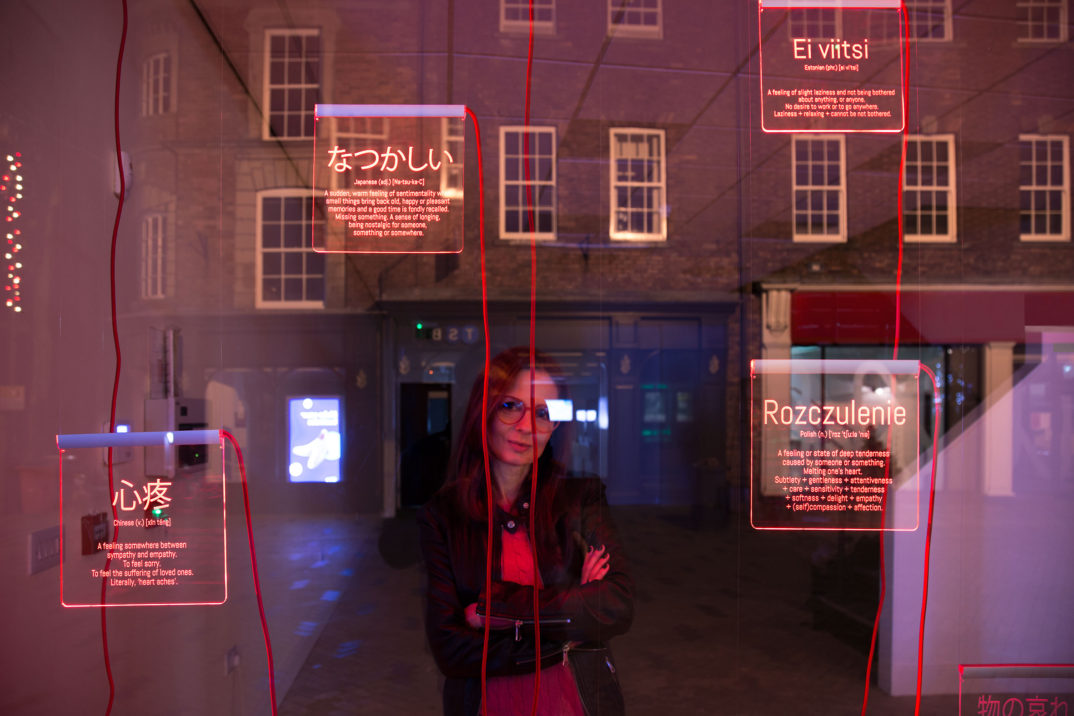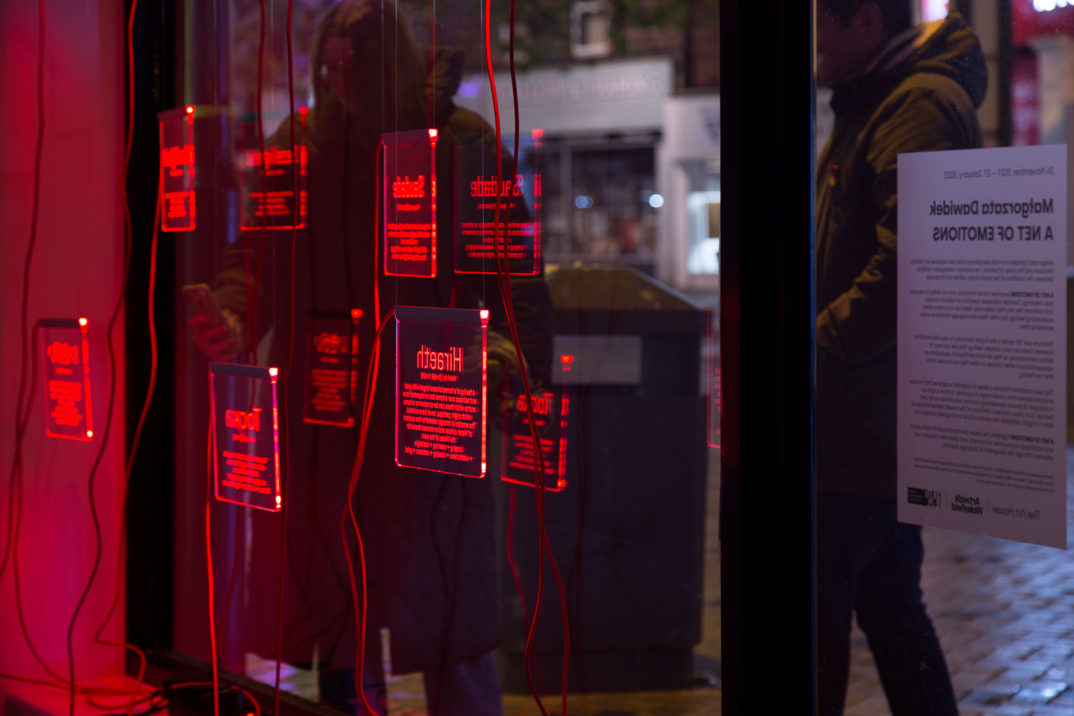The Warmth of the Body
2013
Size: 1550 x 300 x 600 cm
Media: Red light, vinyl, red acrylic on the wall
The project was commissioned by Wroclaw Contemporary Museum. It is in the collection of the Wroclaw Contemporary Museum.
The work consists of 40 white cubes. On their walls, the artist placed black letters of the alphabets belonging to the languages spoken in the European Union. We can find there the signs of Latin and Greek alphabets, Cyrillic, ligatures and diacritical marks, present in several languages.
The aim of the work is to create a field for common communication. The project attempts to initiate a situation of ‚possible communication’, that would be a result of a cultural integration based on a common Latin-Greek language platform. This situation appears despite phonetic or personal barriers. The work takes the form o a game. Arbitrary parts of speech derived from one language are possible to constructively function in expressions formed in another. In this realization, an important role is played by a common communication base.

Moreover, the work is interactive – it determines the recipient to create their own message that will be visible from a distance and legible to others. The walls of the cubes, supporting one another, play a symbolic, integrative role here. A cube without one wall, and hence without one letter, is no longer a cube.
Àpropos is a series of debates, lectures and meetings organized at WCM, which subjects are inspired by the Polish Presidency 2011 of the Council of the European Union.
Coordination of the Project: Kamil Nowelli, Wroclaw Contemporary Museum (more about the project).
Special thanks to Kamil Nowelli, Paweł Dziaduch, Michał Stefani
27 October 2011, Wroclaw Contemporary Museum
A site-specific textual work in a narrow (1,1m), high (3,5m) and long (16m) exhibition space of the museum, placed against the windows. The shape of the space does not allow stepping back and reading the text in full. The work can be only seen and read from within.
The word GRENZERFAHRUNG is a compound of two terms: border and learning. The work is a follow-up to the video installation Border of Cognition (2007), whose text is written in Hebrew.

The German-language version is a response to the Hebrew original. The aim of this work was to create the opportunity for dialogue between two cultures and languages entangled in history, by hampering the perception of the texts but also by pointing to their meanings.
The work is in the Museum Modern Art collection, Hunfeld, Germany.
Photos by Jakub Gryglicki




















